
9 minute read
Tidewater Gardening: K. Marc Teff eau
TIDEWATER GARDENING
by K. Marc Teffeau, Ph.D.
Monarda in May
Are you interested in attracting insect pollinators to your landscape? Planting pollinator gardens has become an increasing trend in home landscaping the last few years. A pollinator-friendly and ecologically sustainable garden is both beautiful and able to attract and sustain beneficial insects, reducing the need for pesticides. A number of annual and perennial plants can be used in a pollinator garden.
The flower nectar of Monarda, aka bee balm, spotted bee balm, bergamot and Oswego tea, is excellent for attracting pollinators. It attracts hummingbirds, butterflies
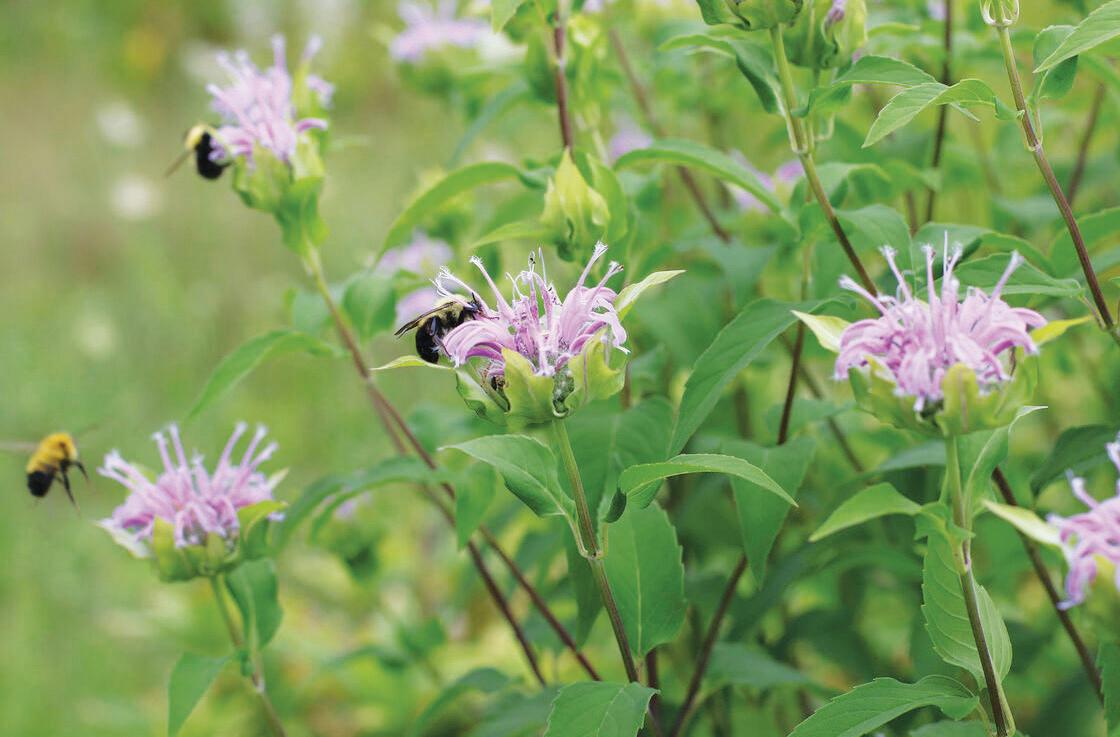
and pollinator bees. The National Garden Bureau (NGB, ngb.org) has selected the native tall-growing perennial flower Monarda as one of its “Plants of the Year” for 2021. Monarda is a drought-tolerant member of the Lamiaceae (mint) family. You can always identify members of the mint family because they have square stems.
Monarda gets its common name “bee balm” because it is a medicinal herb that has traditionally been used to soothe bee stings. Native Americans used Monarda to make a bee balm tea to treat fevers and chills. This native perennial also has an interesting place in American history according to the NGB. The Oswego tribe made an herbal tea from bee balm, and they taught early American settlers how to use it. The NBG notes “This just happened to come in very handy fol-
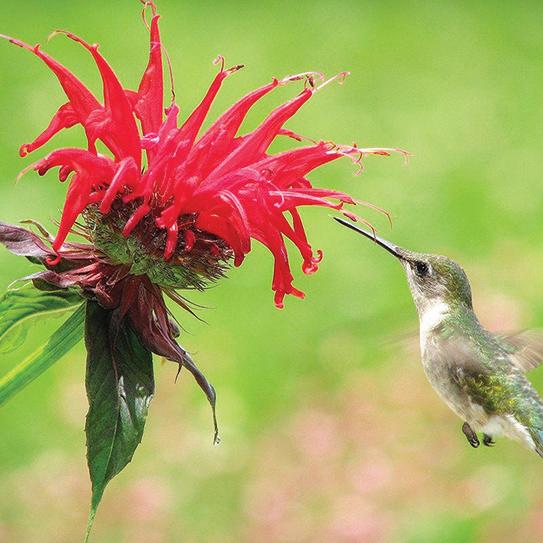

Rt. 50 at Rt. 565, 2 mi. South of Easton
410-822-8866 www.riodelmarent.com

SALES - PARTS - SERVICE
RIO DEL MAR ENTERPRISES

LOOK FOR US IN OUR NEW LOCATION!
The former Salisbury Pewter building, Rt. 50 - 2 miles south of Easton
lowing the Boston Tea Party. As the settlers revolted against the British tax on tea, they drank tea made from Monarda instead, thus thumbing their noses at the British and their taxes.”
Monarda is made up of multiple species, most of which are hardy perennials and all of which are native to certain regions of North America. The NGB lists three species of interest: “Monarda punctata, aka Horsemint or Dotted Mint, is somewhat of an unruly native prairie plant characterized by tall unbranched stems topped with rounded clusters of pink or lavender tubular flowers. The stacked combination of speckled flowers and colorful bracts make this distinctive and unusual.
Monarda fistulosa, or wild Bergamot, is one of the species commonly used for medicinal purposes. Being highly aromatic with showy lavender-pink flowers, it is also used as a honey plant. Monarda didyma (Scarlet Bee Balm) has long been cherished for not only its use for tea but also its ornamental value. The bright scarlet/red flowers of M. didyma are still a part of many ongoing breeding programs with Monarda.”
Monarda leaves have an indefinable, almost lemony scent. According to the NGB Monarday leaves and flowers add a citrus, note to salads, and the dried flowers can be used in potpourris.
Considered an old garden favor-
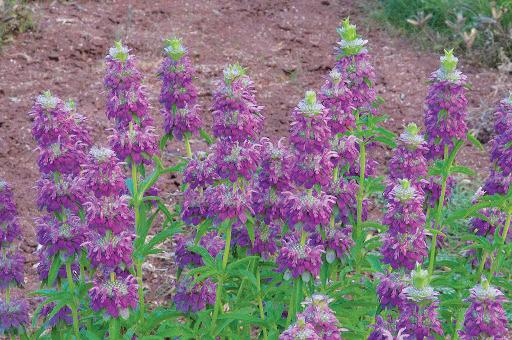
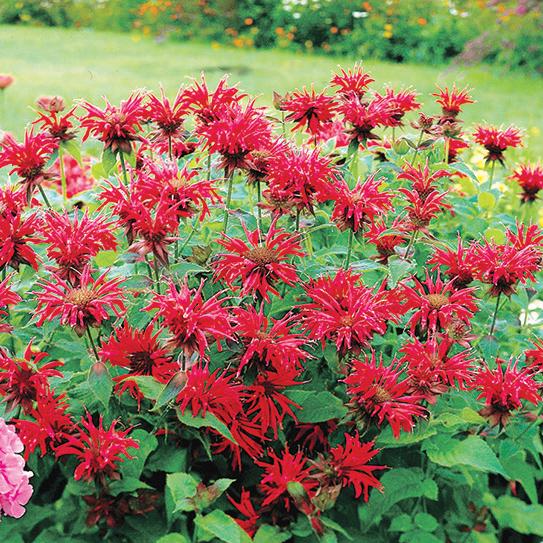
ite, Monarda blooms all summer. Its colors range from white to rosepink to wine-red. Most varieties grow 2 to 3 feet high. Monarda also makes an excellent addition to any cut flower garden.
To keep the plant looking nice, it is important to remove spent flowers and to prolong bloom. Bee balm spreads by runners to form large clumps but is not considered to be too aggressive. Like other members of the mint family, it is a perennial that should be divided about every three years. The NGB recommends that if you would like a bushier habit to the plant, you should pinch some of the emerging tips of the Monarda as it emerges from the roots/rhizomes in the spring.
A number of Monarda cultivars are available for landscape plantings. ‘Cambridge Scarlet’ offers bright red flowers in early summer that attract hummingbirds. ‘Mahogany’ is another cultivar that you
FRANK E.DAFFIN, INC.
Quality Builders Since 1936
410-822-2364 MHIC #1857 MHBR #877
frankedaffininc.com · fedaffin@atlanticbb.net

might try. An added plus is that the plant is deer and rabbit resistant. The major downside of this plant is that it can have mildew problems later in the summer. The cultivar ‘Mahogany’ is reported to have resistance to powdery mildew.
Bee balm is an easy perennial to grow in the home landscape. It prefers full sun to get the best flower production but will tolerate some shade. It is somewhat drought tolerant but will need water during extended dry periods. In heavy clay soils, it is a good idea to amend the soil with a good compost or other organic mixture before planting. Space bee balm plants 18 to 24 inch-

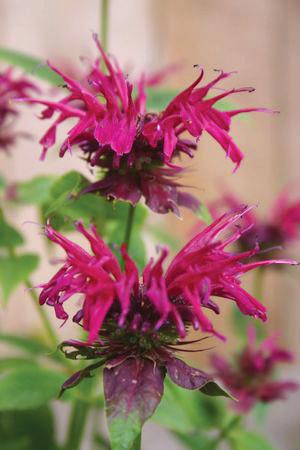
es apart in the flower bed. Bee balm has no special fertilizer requirements other that what is normally applied to the perennial flower bed.
Did you plant shade trees or shrubs in March or April? It is important to water newly planted trees and shrubs regularly during the first year or two after planting to help establish a good root system. They need at least 1 inch of water each week. It is better to water deeply once a week than to water lightly every day; the former practice encourages deep, droughtresistant roots, while the latter encourages surface roots that may suffer during dry spells.
Be careful, however, when wa-

tering plants in heavy clay soils. With soils with poor drainage, like clay soils, you can kill the newly planted tree or shrub with kindness by over watering too much. It is also important to mulch to conserve moisture and control weeds, but PLEASE, no “volcano” mulches where the mulch is piled up 7 or 8 inches against the stem of the tree. You can still plant trees and shrubs in May, just make sure they are tended during the summer.
Now is the time to set out marigolds, petunias, ageratums and fibrous begonias in the flower garden. All are good border plants. Multiflora petunias withstand heat much well than other types and are more attractive throughout the summer. They are more resistant than other types to botrytis, a disease that cripples petunias, especially in damp weather. They also branch more easily, which means less maintenance. Multifloras are most useful for massed effects in beds.
You can also set petunia plants among fading tulips or daffodils to hide the unsightly wilting leaves. After the bulb foliage begins to fade, you can tie the leaves in gentle knots to neaten them, but don’t remove them until they have dried completely. The spring-flowering bulbs
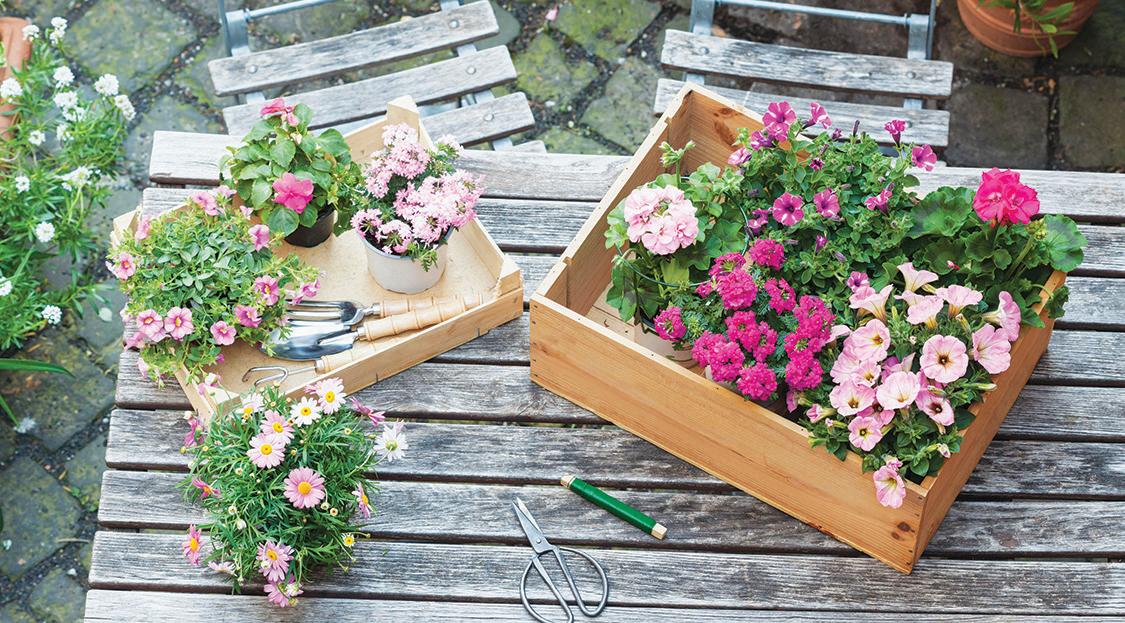
need to have their leaves intact to generate the food reserves that go into the bulb for next spring’s flowering and growth. Impatiens is the most satisfactory annual for use in shady areas. Begonias, coleus, ageratum, salvia and vinca prefer light shade (5 to 6 hours of sunlight).
If you are looking for plants that flower each year, require little care and are rarely bothered by pests or disease, try some of these perennials: coneflower, bleeding heart, coral bells, daylily, geum, hosta, bergenia, Virginia bluebell and veronica.
Anxious to get the vegetable garden beds planted? As a result of COVID-19 and people staying home, a lot of novice gardeners have started gardening. Sales of vegetable plants, seeds and related materials have increased greatly as folks are getting back to growing their own food. The soil is warming up and the last frost date has passed, so we can get to some of our spring plantings.
In the vegetable garden, it is time to make your first sowing of green beans, cucumbers, squash and sweet corn, and a second seeding of lettuce. Transplants of tomatoes, eggplants and peppers can be placed in the garden. To prevent cutworm damage on these transplants, remove the tops and bottoms from small coffee cans and place the cans over the transplants in the early evening. Next morning, remove them so the plant can

get full sun. Repeat this practice for about a week until the plants become established.
A telltale sign that you have cutworms in the garden is holes in the ground the diameter of a pencil. The cutworms come out at night and clip the transplants off at the ground level.
Other insect pests that are active now include aphids, cabbageworms, squash bugs, cucumber beetles and Colorado potato beetles. Aphids seem to appear overnight and suck the sap from the leaves and tender new growth but usually cause little permanent damage. Several parasites and predators, notably the ladybird beetle, usually help keep this insect pest in check. A force-
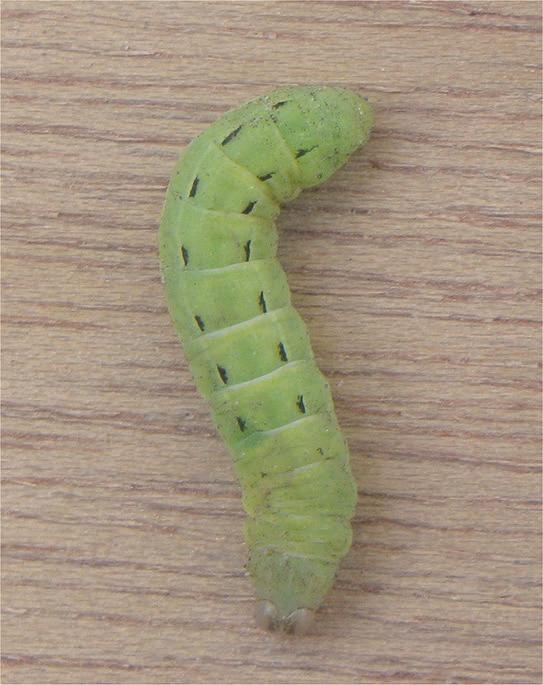
C. ALBERT MATTHEWS
INC.
Where Integrity Meets Innovation CARRIER 360° ENERGY AUDIT WATER PURIFICATION SYSTEMS PLUMBING-HEATING-AIR CONDITIONING GEOTHERMAL-SOLAR-NEW INSTALLATION ELECTRICAL-REPAIR & MAINTENANCE EFFICIENCY-SAFETY-COMFORT
WWW.CALBERTMATTHEWSINC.COM 410-822-0900
ful spray from the garden hose will also help keep aphids under control. For serious infestations, try using a soap insecticide.
Keep an eye out for cabbageworms in the cabbage and broccoli plantings. They can ruin the heads if not kept under control. How many times have you gone out to the vegetable garden, picked a couple of nice heads of broccoli, brought them inside and steamed them for dinner and then found a couple of blanched white cabbageworms in the heads when you put them on the dinner plate? Don’t worry, the cabbageworms are a source of protein, but most of us prefer being served protein in the form of a steak. Use a biological control called B.t. or Dipel to control these worms.
Striped and spotted cucumber beetles are voracious feeders on many vegetables, including squash, corn, cucumbers, melons and beans. They also transmit the bacterial wilt disease that causes the plants to rapidly wilt and die. These pests must be controlled early with
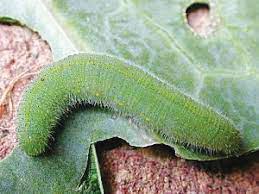

floating row covers. Plant protection in the early stages of growth is important. However, when the plants start to flower, especially squash and cucumbers, you will need to remove the row covers to allow bees access to pollinate the flowers.
Try using a homemade spray of horseradish roots and leaves, garlic, peppercorns, hot peppers and green onions. Blend these ingredients up in your blender and then place in a pail and add one cup of liquid detergent. Stir and let set overnight, and then strain through cheesecloth. Use one-half cup of the solution to one quart of water and spray on the plants. Happy Gardening!
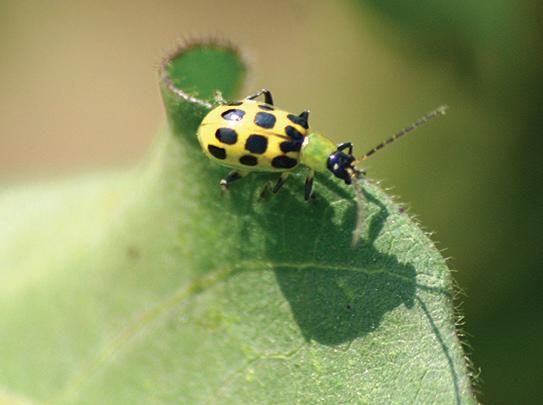
Marc Teffeau retired as Director of Research and Regulatory Affairs at the American Nursery and Landscape Association in Washington, D.C. He now lives in Georgia with his wife, Linda.










